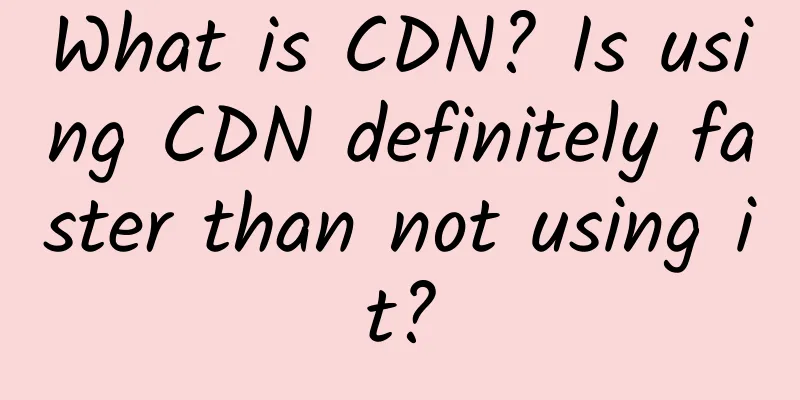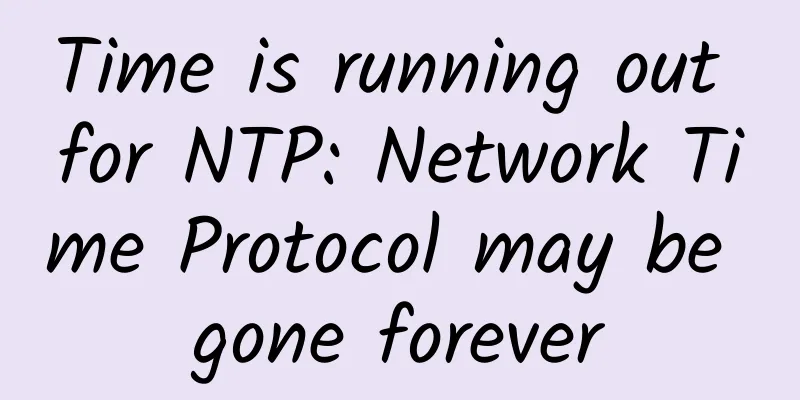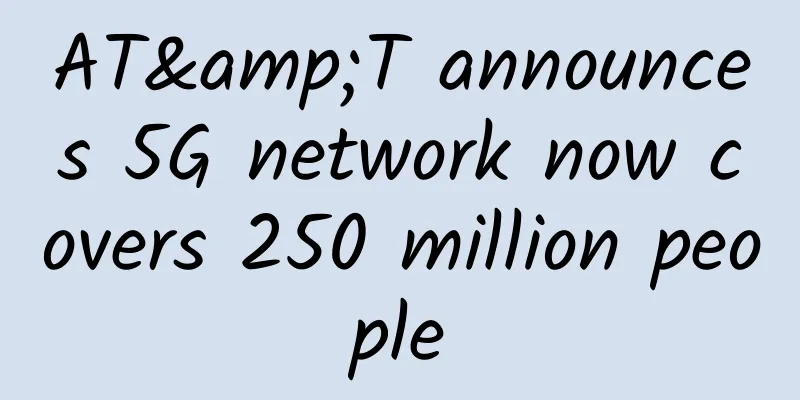IT Knowledge Encyclopedia: Detailed Explanation of IPv6

|
As an Internet user, you have more or less heard about the news of IPv4 address exhaustion. However, the IETF (Internet Engineering Task Force), which defines IPv4, did not expect that the Internet today will see such a huge increase in users. The limited network address resources of IPv4 have seriously restricted the application and development of the Internet. The commonly used NAT (Network Address Translation) technology can only alleviate the urgent problem of insufficient public network IPs, and the technical solution that can truly fundamentally solve the problem of IP address quantity and promote the development of the Internet must rely on IPv6 (Internet Protocol Version 6).
With the promotion of IPv6 development by various countries and major operators, IPv6 has gradually entered the lives of users. For example, we will see the IPv6 logo on the opening screen of certain APPs. So why are more and more apps adding IPv6 labels to their startup screens? Does IPv6 simply increase the number of IP addresses? 1. Number of IPv6 addresses In IPv4, the length of an IP address is 32 bits, which is approximately equal to 2^32 network addresses. IPv6 has a larger address space, with a length of 128 bits, which is approximately equal to 2^128 network addresses (approximately 3.4×10^38). This number is far greater than people's imagination of the scale of Internet development. 2. IPv6 address format Because IPv6 addresses are longer, the address format is relatively more complicated, and it uses hexadecimal representation (numbers 0-9 plus letters AF). It is not easy to remember an IPv6 address. IPv6 addresses can be abbreviated. For example, the leading zero of each group of values separated by a colon can be omitted. For example: A colon-separated group or several consecutive groups of all-0 values can be represented by double colons (the :: abbreviation can appear at most once in an IP address), for example: 3. Network and host identification of IPv6 In IPv4, most users know that the subnet mask is used to divide the network number and host number of the IP address, so as to know the network segment to which the IP address belongs. For example: 192.168.1.2 (255.255.255.0). We can determine the network identifier of this IP as the first 24 bits through the mask length of this IP, that is, 192.168.1.0 is its network segment, and the host identifier is the last 8 bits. 1. So how does IPv6 divide network segments? The length of an IPv6 address is 128 bits, and the default last 64 bits are the interface ID, i.e. the host ID. The host ID is obtained by converting the 48-bit MAC address plus the ID assigned by IEEE according to the EUI64 conversion algorithm, which can greatly reduce the possibility of IP address duplication. 2. Global unicast address The global unicast address is the most commonly used IPv6 address type, that is, a globally unique IP address, which is equivalent to the IPv4 public IP address. In addition to most global unicast addresses, there are several special address types that need to be distinguished: IV. Advantages of IPv6 1. Larger number of network addresses 2. Smaller routing tables Because IPv6 follows the clustering principle when allocating addresses, the same prefix IP address is allocated by default in the same area. When the route is being searched and transmitted, the optimal route can be selected more efficiently for transmission, greatly saving the transmission cost. 3. IPv6 fragmentation In an IPv4 network, when data packets are being transmitted, the router will fragment them according to the MTU value (maximum transmission unit, 1500 bytes by default) that it sets. In an IPv6 network, when a host sends a data packet, it has already fragmented it (the default minimum MTU is 1280 bytes). In this way, there is no need for a router to perform fragmentation during data transmission, which greatly improves the efficiency of data transmission. 4. Plug and Play In an IPv4 network, if the user does not want to manually configure the IP address, he or she must rely on the DHCP service for automatic address allocation. In IPv6, stateful address allocation can also be performed through DHCPv6, but stateless address allocation (SLAAC) can also be performed without relying on DHCPv6. IPv6 can perform routing requests and announcements through NDP to obtain the network prefix of the IPv6 address. The last 64 bits of the IPv6 address are obtained by adding the physical address (MAC) of the network card to the conversion algorithm. It is a globally unique address in itself, so it is difficult to encounter IP address conflicts. 5. Transmission Security In IPv6 networks, in addition to the simplification and improvement of previous IPv4 messages, the biggest difference is the mandatory use of IPSec secure encrypted transmission, so that users no longer have to worry about information leakage caused by data packet capture, and most data spoofing attacks are avoided. 5. How do IPv6 and IPv4 communicate with each other? At the beginning of the article, it was mentioned why so many apps are specifically marked as supporting IPv6 networks. The reason is that IPv4 and IPv6 networks cannot communicate with each other by default, but apps that support IPv6 can be directly accessed under the IPv6 network. Well, currently, most devices on the Internet are still using IPv4 networks. It is impossible for all devices to switch to IPv6 networks at the same time. During the long transition period from IPv4 to IPv6, how can devices on both networks access the Internet and communicate with each other normally? 1. Dual-stack technology Dual stack technology refers to running IPv4 and IPv6 protocols simultaneously on a router or host. Most of the application servers use a dual-stack host solution. Strictly speaking, it does not solve the problem of interoperability between IPv4 and IPv6, but adapts the two network modes to provide services to clients in different networks. When a client on an IPv4 network initiates a request, the server and link will respond on the IPv4 network. Similarly, when the initiating client is on an IPv6 network, the server will respond on the IPv6 network. Conversely, you can also configure dual protocol stacks on the client terminal to access servers under different network protocols respectively. 2. Tunnel technology Currently, common IPv6 tunnel transmission solutions include manual tunnels and automatic tunnels, such as 6 over 4, 6 to 4, etc. Automatic tunnels require dual-stack router support because they need to configure both IPv4 and IPv6 addresses. Tunnel technology refers to encapsulating IPv6 data packets in IPv4 data packets for sending. Its advantage is that there is no need to modify the existing IPv4 network, and the tunnel can be used directly to transmit IPv6 data packets. Tunnel technology is mainly used to reduce the cost of setting up equipment during the transition to IPv6 networks, but it still cannot solve the problem of intercommunication between pure IPv4 hosts and IPv6 hosts. 3. Network protocol conversion technology The network protocol conversion technology on IPv6 is similar to the NAT technology commonly used on IPv4, but the content of the conversion is different. The early translation gateway used NAT-PT technology, but due to the limitations of the technology and security, it was eventually replaced by NAT64 conversion technology. The working principle of NAT64 is to build a translation gateway between IPv4 and IPv6 networks, which will translate and transmit IPv6 and IPv4 packets through the gateway. NAT64 can generally only translate IPv6 packets sent to IPv4 networks in one direction, but cannot actively translate packets sent from IPv4 to IPv6 in the opposite direction. Static entry binding is required to truly realize IPv4 access to IPv6 networks, which is technically costly. 4. IVI Technology IVI technology is a translation gateway technology developed in China. Although both are translation gateways, NAT64 conversion is state-based, while IVI can perform stateless mapping. The network operator generates IVI-specific addresses by mapping a portion of IPv4 and IPv6 addresses. If users of IPv6 networks want to access IPv4 networks, they can obtain IPv4 addresses through the mapping table of the IVI gateway to directly access the IPv4 network. If IPv4 users need to access IPv6 networks, they will obtain IVI-6 addresses through the IVI gateway to access IPv6 networks. Currently, IVI is the best solution for the transition from IPv4 to IPv6 because it does not require changing users' usage habits and costs, and operators can directly build translation gateways to enable mutual access between the two networks. VI. Conclusion With the rapid development of the Internet, the transition from IPv4 to IPv6 is an inevitable trend. With the promotion of IPv6 by various countries and operators, more devices and products will join the Internet of Things environment in the near future. The original device interconnection problems will undergo tremendous changes, and ordinary Internet users will also be able to enjoy the convenience brought by IPv6. |
<<: Obtaining 5G licenses, see what operators and equipment manufacturers say
>>: The 5G license has been issued, what should we do now?
Recommend
Sharktech: 50% off on Los Angeles high-security VPS, 2GB RAM/30GB SSD/4TB bandwidth starting at $6.57 per month
Sharktech Shark Data Center VPS 50% discount code...
Comprehensive analysis of SEO optimization: From HTML tags to Sitemap.xml, the techniques you must know
In the digital age, acquiring website traffic dep...
An Shumei, President of Ruijie University: The difficulty of integrating industry and education lies in the change of concepts
[Original article from 51CTO.com] "Industry-...
Ten tips to increase page browsing time
[51CTO.com Quick Translation] Increasing the brow...
Kuroit: £3/month-1GB/15G NVMe/1TB@10Gbps/Ashburner data center
Kuroit is currently promoting its Ashburn data ce...
What are the differences between 802.11ax and 802.11ac Wi-Fi standards? Learn more in one article
In previous articles, we have introduced the orig...
5G messaging has reached the final stage of interoperability and testing. Can it replace WeChat?
The social dream of the three major operators has...
Building the hospital of the future Aruba helps the Children's Hospital of Alabama in the United States transform its digital
Alabama Children's Hospital is a large childr...
STP Spanning Tree Protocol Working Principle
In a complex network, loops are inevitable. In ad...
Why are there constant news about the merger between China Telecom and China Unicom? The reason is related to this matter
China Mobile is too powerful. Do China Unicom and...
4G networks are getting slower and slower? This may be true, but there is absolutely no conspiracy!
[[344211]] This article is reprinted from the WeC...
2 and a half years have passed since the first year of 5G, but users are still reluctant to upgrade to 5G
[[420026]] Recently, Mobile China learned that ev...
5G development still has a long way to go
The construction and development of 5G has gone t...
CFCA creates a secure all-in-one solution, Kunpeng comprehensively promotes financial innovation
Currently, the financial industry is in a critica...
Virtono: New data center in Romania, 25% discount on all VPS starting at 11.21 euros per year
I received an email from Virtono two days ago. Th...









